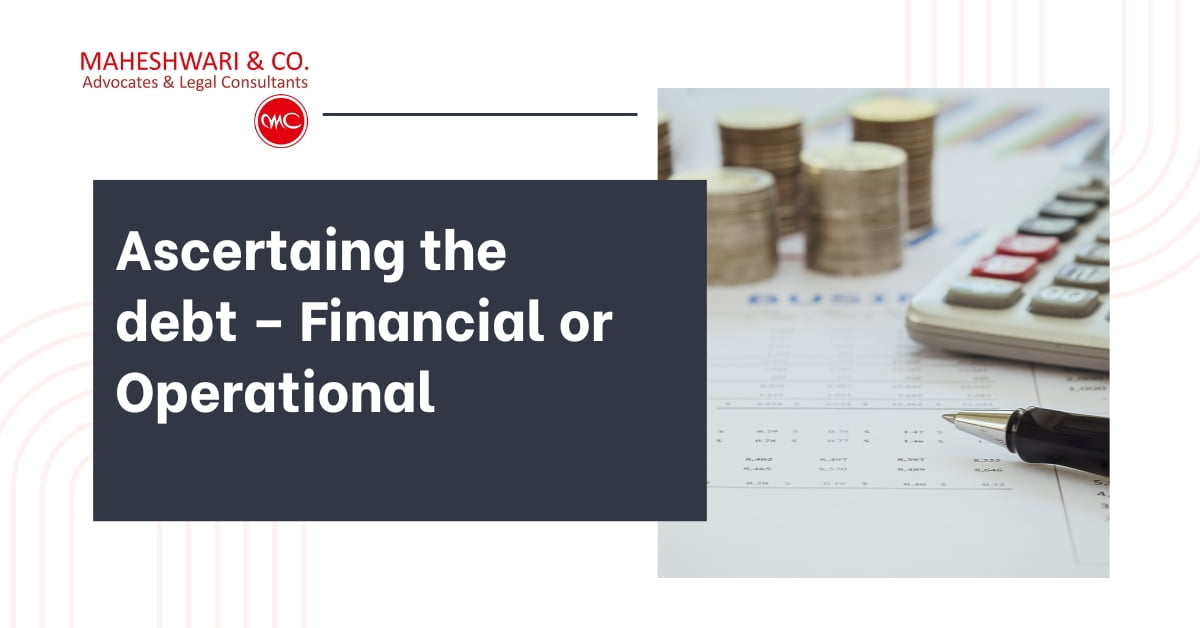In a recent judgment passed by the Hon’ble Supreme Court of India titled as ‘Global Credit Capital Limited & Anr. Vs. Sach Marketing Pvt. Ltd. & Anr.’, Justice Abhay S. Oka & Justice Pankaj Mithal observed that the issue involved is whether the Respondent is a Financial Creditor within the meaning of Section 5(7) of the Insolvency and Bankruptcy Code, 2016 (hereinafter referred as the ‘IBC’).
The two agreements between the corporate debtor and the first respondent outlined the terms of the appointment of First Respondent as a ‘Sales Promoter’ to promote beer manufactured by the corporate debtor for twelve months and First Respondent had to deposit minimum security, upon which the interest of 21% per annum was to be paid by the Corporate Debtor for the deposited amount.
The Oriental Bank of Commerce invoked the provisions of Section 7 of the IBC against the corporate debtor. The National Company Law Tribunal (for short, ‘NCLT’) admitted the application under Section 7 of the IBC by the order dated 12th June 2018. The claim of the Respondent was rejected by the Resolution Professional (hereinafter referred as ‘RP’). The Respondent filed an application before the National Company Law Tribunal (hereinafter referred as ‘NCLT’) and the same was rejected. Further, as appeal was preferred by the Respondent before the National Company Law Appellate Tribunal (hereinafter referred as ‘NCLAT’), wherein it was held that the first respondent was a Financial Creditor in the impugned judgment and order dated 7th October 2021, passed by the NCLAT.
Global Credit Capital Limited argued that the first respondent should not be categorized as a financial creditor under the Insolvency and Bankruptcy Code, 2016 (IBC). They contended that the security deposit given by the corporate debtor to the first respondent was to ensure the performance of the terms of the service agreements, and it did not constitute a financial debt. Global Credit Capital Limited also highlighted that there was no disbursal of debt and no financial contract between the corporate debtor and the first respondent. They further contested the NCLAT’s decision that categorized the first respondent as an operational creditor, stating that the view taken by the NCLAT was not correct.
The arguments submitted by the respondents revolve around the classification of the first respondent as either a financial creditor or an operational creditor. They contend that the first respondent should be classified as a financial creditor based on the agreements entered into with the corporate debtor. They argue that the security deposit was to ensure the performance of the terms of the agreements and that the debt claimed is not an operational debt. Additionally, they highlight the absence of several key factors required to classify the debt as operational under the IBC. They also challenge the decision of the NCLAT in categorizing the first respondent as an operational creditor.
CONCEPT OF FINANCIAL OR OPERATIONAL DEBT
The Court’s analysis involved the determination of the nature of the debts and their correlation with the services provided, leading to the conclusion that the first respondent’s claim constituted a financial debt. While discussing the difference between the Financial and operational Debt, the court relied on the judgments passed in Anuj Jain, Interim Resolution Professional for Jaypee Infratech Limited [(2020) 8 SCC 401], Phoenix ARC Private Limited v. Spade Financial Services Limited & Ors [(2021) 3 SCC 475] , Pioneer Urban Land and Infrastructure Ltd. & Anr[(2019) 8 SCC 416 : (2019) 4 SCC (Civ)1], in relation with the definition of ‘Debt’ under Section 3(11) of IBC, ‘Claim’ under Section 3 (6) of IBC, ‘Financial Debt’ under Section 5(8) of IBC.
The legal conclusions made by the Hon’ble Court:
- There cannot be a debt within the meaning of subsection (11) of section 5 of the IBC unless there is a claim within the meaning of sub-section (6) of section 5 of thereof;
- The test to determine whether a debt is a financial debt within the meaning of sub-section (8) of section 5 is the existence of a debt along with interest, if any, which is disbursed against the consideration for the time value of money. The cases covered by categories (a) to (i) of sub-section (8) must satisfy the said test laid down by the earlier part of sub-section (8) of section 5;
- While deciding the issue of whether a debt is a financial debt or an operational debt arising out of a transaction covered by an agreement or arrangement in writing, it is necessary to ascertain what is the real nature of the transaction reflected in the writing; and
- Where one party owes a debt to another and when the creditor is claiming under a written agreement/ arrangement providing for rendering ‘service’, the debt is an operational debt only if the claim subject matter of the debt has some connection or corelation with the ‘service’ subject matter of the transaction.
CONCLUSION
The Court scrutinized the commercial effect of the transactions and the treatment of the amounts in the financial statements of the corporate debtor. The Court concluded that the security deposits under the agreements constituted a financial debt owed by the first respondent, thereby categorizing the first respondent as a financial creditor under the IBC.
The Court’s legal conclusions emphasized the necessity for a debt to be aligned with the definition under the IBC, the criteria for determining financial debt, and the correlation between the debt and the services provided. Ultimately, the Court upheld the NCLAT’s decision, confirming the first respondent’s status as a financial creditor and dismissing the appeals.
In summary, the Supreme Court clarified the interpretation of financial debt under the IBC, focusing on the nature of the debts, their correlation with services, and the criteria for categorizing creditors. The Court’s decision upheld the classification of the first respondent as a financial creditor based on the agreements and the commercial effect of the transactions, providing a clear legal precedent in insolvency and bankruptcy cases.






